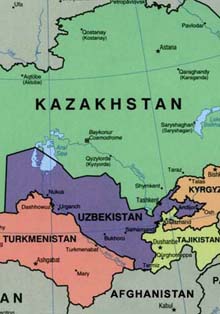Ricardo Ruiz de la Serna
Professor of Contemporary World History at CEU-San Pablo University and author of “The Armenian Genocide”
This year marks the 108th anniversary of the Armenian Genocide, the destruction of Armenian communities in the Ottoman Empire from the Mediterranean coast to Eastern Armenia, including the six provinces of historical Armenia within the Ottoman Empire: Van, Erzurum, Harput, Bitlis, Diyarbekir and Sivas. The massive raid against Armenian intellectuals in Constantinople – among them, for example, the great musician Komitas Vardapet – and the burning of Smyrna, symbolically mark the beginning and the end of what Armenians have called the “Aghet” or “the catastrophe”. The Young Turk regime, and in particular the triumvirate of the Union and Progress Committee formed by Enver Pasha, Kemal Pasha and Talat Pasha, put an end to the cultural, economic and political life of the first people to convert to Christianity. The Armenian Genocide Museum-Institute puts the death toll at 1.5 million. The consequences – for example, the demographic imbalance caused by the massacre – persist to this day.
The path that led to the Genocide started with the “Hamidian Massacres” between 1894 and 1896 and went through the Adana Massacre of April 1909. The rise of nationalist doctrines such as Pan-Turanism and Pan-Turkism paved the way for genocide. Propaganda portrayed Armenians as traitors, enemies of the homeland and conspirators. The Syriac Christians and the Greeks of Pontus suffered similar fates. In the empire dreamed by the military and nationalist poets, the Christian minorities and, in particular, the Armenians were regarded as foreign bodies.
The entry of the Ottoman Empire into the Great War provided an opportunity to accelerate the process of destruction of the Armenians. In a combination of public and secret instruments, the means to exterminate a people were arranged: laws depriving them of their heritage under the pretext of “protecting” it, paramilitary units executing orders to kill, forced transfers of civilians who were then abandoned in the desert to die of hunger and thirst, massacres of intellectuals who could sustain the Armenian national identity, slavery and forced marriages for women, forced conversions to Islam… The Armenian Genocide prefigures the imaginary of the horrors of our time: platoons of soldiers razing villages to the ground, trains driving victims to certain death, detentions without guarantees or trial, starvation and thirst as effective forms of mass murder.
But the Armenians of the Ottoman Empire did not go to their deaths like sheep to the slaughter. Wherever they could resist, they fought bravely. The Armenian resistance in the summer of 1915 inspired Franz Werfel’s great novel “The Forty Days of the Musa Dagh” (1933). There were witnesses who recorded the horror that unfolded before their eyes; for example, German soldiers in the service of the Ottoman Empire, Christian missionaries and diplomats. There were also heroes who refused to witness the crime without acting. For example, Al Husayn Ibn Ali, hierife of Mecca, issued a decree calling for protection and aid to the Armenians. In Eastern Armenia, where resistance stopped the final Ottoman offensive at the battle of Sardarapat (1918), Armenian life was sustained.
In the Russian Empire and the Soviet Union, in Persia, in France, in Argentina and in the United States, the survivors did not forget their suffering.
The Armenian Genocide, perpetrated 108 years ago, continues to cast its shadow over our times. It is the responsibility of the democracies of our time to prevent the history of genocide from repeating itself with this people or with any other.
© All rights reserved






